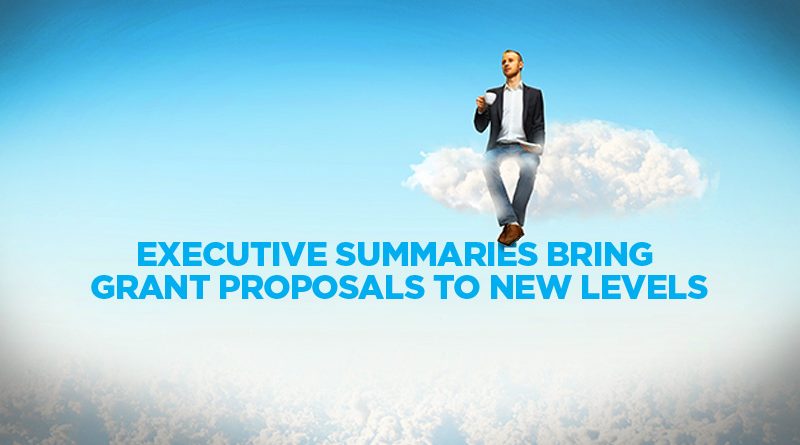Grant Proposals: The Importance of an Executive Summary
At the forefront of your grant proposal stands the executive summary. More than just a mere abstract, it serves as the initial encounter between your proposal and the discerning eyes of grant reviewers. This condensed synopsis encapsulates the essence of your proposal and, if engaging enough, wields the power to captivate your reader.
GrantWatch wants to do everything possible to provide you with the tools you need to be successful in your grant seeking process. The importance of the executive summary is often overlooked. We hope the following information will help you to better understand its importance and help in the overall preparation of your grant proposal.
What is the Executive Summary and What is Its Importance When Writing a Grant Proposal?
Essentially, the executive summary is an abstract or project summary. It serves as a direct and elevated overview of your business plan. It distills the essence of your proposal into a brief and focused presentation. What’s more, in the context of a grant proposal, this document outlines the addressed need, your organization’s structure, financial requirements, and the positive impact your entity aims to make on its audience.
Let’s face it, grant-makers, whether governmental agencies or private foundations, typically have numerous applications to wade through. It makes sense to write an executive summary that sparkles just enough to catch the eye of any reviewer. After all, given the volume of proposals, the executive summary can sometimes be the deciding factor as to whether a grant reviewer keeps your proposal for further review. Thus, it must captivate the reader, evoking a sense of excitement and curiosity to encourage a deeper exploration of the proposal.
Helpful Tips
- To begin, an executive summary should be the last document to be written and the first to be read.
- Next, it’s all about that hook. Construct an attention-grabbing statement to draw your in.
- In addition, be clear about the problem your project will address. Focus your writing on proving you understand the issue.
- Directly following the problem, explain your solution. The trick here is to provide evidence of the benefits of your deliverables.
- And finally, a call to action is the perfect closer. End your executive summary with a direct request. Close the deal.
In conclusion, a well-written executive summary, grabs your reader’s attention, highlights your project, and invites action.
Since it’s the holiday season for many faith-based religions. GrantWatch provides a list from its Faith-Based category of grants currently available. We hope you find a grant for your endeavors.
Faith-Based Grants and In-kind Support
- First, grants to eligible nonprofit, veterans, and faith-based organizations, schools, hospitals, and government agencies for activities that help create/sustain thriving communities. Grants are also for volunteer fire departments. Funding is for programs and projects focusing on the areas of workforce development, education, poverty, and the environment.
- Next, grants to nonprofit and for-profit organizations, faith-based and community-based organizations, and IHEs for health information technology research. Funding is also for government agencies and tribes.
- There are grants to eligible nonprofits, government agencies, and faith-based organizations to benefit local communities across a broad range of focus areas. Funding supports projects and programs in the focus areas of arts, culture and humanities; education; environment; health and medical; human services; and public/society benefit.
- Also, there are grants of up to $30,000 to religious and secular nonprofits for a range of programs and projects to benefit the community. Focus areas include mental health, senior citizens, income inequality and poverty, children and family empowerment, and education.
- There are grants of up to $2,000 to eligible nonprofits, government agencies, faith-based organizations, hospitals, and schools for programs and activities to benefit children and youth.
- Also, grants to nonprofits, governmental agencies, tribes, and religious organizations for programs/services benefitting residents. Funding will be for health, human services, and educational programming.
- Lastly, grants to nonprofits and public institutions for programming to establish understanding/cooperation between groups and individuals from different religious backgrounds. Funding is for organizations to promote religious literacy and create opportunities for courageous multi-faith conversations and collaborations.
We hope this information will be helpful in preparing your grant proposal as you begin your journey. As a result, we hope you will succeed in being awarded the grant(s) you are seeking!
About GrantWatch
With close to 8,000 grants currently available, GrantWatch.com is the leading grant listing directory. Upgrade to a MemberPlus+ subscription to view the full grant details, including eligibility criteria and application information. For more information, you can also visit the GrantWatch FAQ page. To see the great value of all 20 of the top GrantWatch features, click here.
Please Note: There is no guarantee by GrantWatch nor the author that grants will be awarded as a result of this information.

